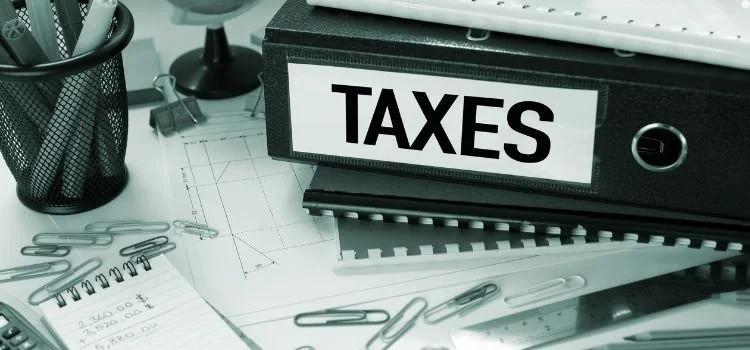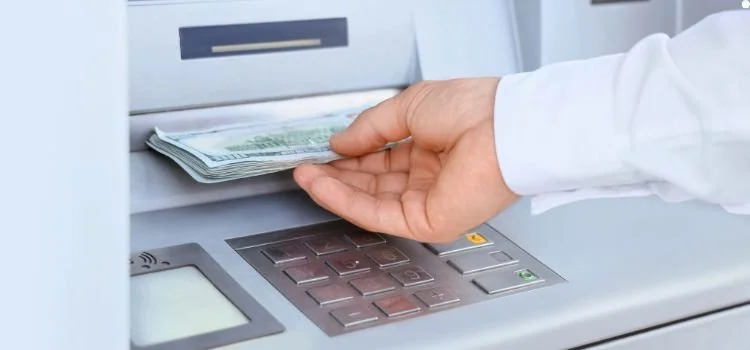Tax-efficient ways to withdraw money from your second-hand business
How you take money out of your business is just as important as how much you make. Many small business owners withdraw cash without thinking about the tax consequences.
But did you know that poor planning could mean paying more to HMRC than you really need to?
In fact, UK tax rules provide several legitimate ways to withdraw money, some of which are more tax-efficient than others. Choosing the right method could save you thousands of pounds a year, improve your cash flow, and even reduce the risk of penalties.
With the right knowledge and planning, you can make sure every pound you earn works harder for you.
By the end of this post, you’ll have a clear understanding of the main tax-efficient withdrawal strategies: salary, dividends, director’s loans, business expenses, and pensions, and when to use each one for maximum benefit.
Tax Efficient Withdrawals for Second-Hand Businesses
1. Pay Yourself a Salary
One of the most common ways to withdraw money from your business is by paying yourself a salary. But is it the most tax-efficient way?
The answer depends on your circumstances.
Paying yourself a salary through PAYE (Pay As You Earn) means your business treats you as an employee. Your salary is a deductible expense for Corporation Tax purposes, which means it reduces your company’s taxable profits. However, both you and your business may have to pay National Insurance Contributions (NICs), which can eat into your take-home pay.
For many directors of small limited companies, the most efficient strategy is to set a salary at or just above the National Insurance threshold.
As of April 2025, the Primary Threshold for employees is £12,570 per year (the same as the personal allowance), while the Secondary Threshold for employers is £9,100 per year.
This means:
If you set your salary below £12,570, you won’t pay Income Tax.
By keeping it above £9,100, you still qualify for state pension credits and other benefits.
Your company also gets to deduct the salary as a business expense, reducing Corporation Tax.
This approach gives you the best of both worlds: compliance with HMRC rules, reduced tax liability, and continued National Insurance credits towards your future state pension.
In short, a salary forms the foundation of most owner-directors’ tax strategies, but rarely should it be your only method of withdrawing money.
2. Dividends
Dividends are often the next logical step after a modest salary.
Unlike salaries, dividends are paid from profits after Corporation Tax has been deducted. That means your business must be profitable before you can declare and pay them.
Here’s why dividends are considered tax-efficient:
They do not attract National Insurance Contributions.
They are taxed at lower rates than salary once within your personal allowance.
You also benefit from the Dividend Allowance, which for 2025 is £500 tax-free (note: this was reduced from £2,000 in April 2023 and £1,000 in April 2024).
For example, if your second-hand watch dealership makes £50,000 profit, you could pay yourself a small salary to stay below the Income Tax threshold and then take the rest as dividends.
After Corporation Tax (currently 25% for profits above £250,000, or a sliding scale for smaller profits), the dividends are taxed at 8.75% (basic rate), 33.75% (higher rate), or 39.35% (additional rate).
This combination often results in less tax overall compared to taking the same amount entirely as salary.
But there are important rules to follow:
Dividends must be declared properly with board minutes and vouchers.
You can only pay them from retained profits, not from loans or overdrafts.
Timing matters; taking large dividends in one tax year may push you into a higher tax bracket.
In practice, most business owners use a salary + dividends combination for the most tax-efficient withdrawals. A small salary ensures compliance and pension credits, while dividends keep taxes lower on the bulk of earnings.
For HMRC guidance on dividends, you can read more here: HMRC – Dividends and Tax.
3. Using a Director’s Loan Account
A Director’s Loan Account (DLA) is one of those tools that many small business owners don’t fully understand, but when managed properly, it can be incredibly useful.
In simple terms, it’s a record of any money you (as a director) borrow from or lend to your business. If you take out more than you’ve put in, you owe the business money. If you’ve invested more into the business than you’ve withdrawn, the business owes you.
For second-hand business owners, a DLA can be a flexible way to withdraw funds without committing to regular salaries or dividends.
For example, if you’ve had a profitable quarter and want to cover personal expenses, you can draw money via your DLA. If managed within HMRC rules, this can sometimes be more tax-efficient than taking immediate dividends.
The key tax point to remember is that if your DLA is overdrawn by more than £10,000, it may trigger a benefit-in-kind tax charge, and your company could also face a Corporation Tax charge under Section 455 tax if the loan isn’t repaid within nine months of the company’s year-end.
When used wisely, a Director’s Loan Account can give you:
Short-term access to funds without immediate tax liability
Flexibility to balance personal and business cash flow
A structured way to record investments back into the business
Director’s Loan Account
4. Business Expenses
This is one of the most practical ways to keep more money in your pocket.
Business expenses are costs that are “wholly and exclusively” for business purposes, and they directly reduce your company’s taxable profit. Lower taxable profits mean less Corporation Tax to pay.
For second-hand businesses, eligible expenses can include:
Business travel (e.g. visiting suppliers, trade fairs, or auctions)
Office costs (including home office allowances, rent, utilities, and software like Xero or QuickBooks)
Marketing expenses (ads on Google, Facebook, or marketplaces like eBay)
Professional fees (accountants, solicitors, consultants)
Stock-related costs (repairs, refurbishment, authentication services for pre-owned goods)
For example, if you run a jewellery dealership and spend £5,000 on marketing campaigns and professional valuations, this reduces your taxable profit by the same amount. At a Corporation Tax rate of 25%, that’s a £1,250 saving.
The mistake many small business owners make is not keeping proper records. HMRC requires proof (receipts, invoices, mileage logs) for every business expense.
So yes, business expenses don’t just keep your operations running; they actively make your business more tax-efficient.
5. Pension Contributions
Pension contributions are considered an allowable business expense, which means they reduce your Corporation Tax bill while building your future wealth.
For instance, if your second-hand car dealership contributes £10,000 to your pension, that £10,000 is deductible from your taxable profits.
At 25% Corporation Tax, that’s an immediate £2,500 tax saving. Plus, the money goes into your pension pot to grow tax-free until you retire.
The beauty of pensions lies in their double advantage:
They reduce your company’s tax bill today
They secure your financial future tomorrow
It’s also worth noting that employer pension contributions don’t count towards your personal annual allowance for Income Tax purposes, making them far more efficient than taking out large dividends and paying higher-rate tax.
For 2025, the annual pension allowance is £60,000, though you can carry forward unused allowances from the past three years. This makes pensions a highly flexible option if you’ve had fluctuating profits.
In short, pensions are not just for the future; they’re a smart tax-planning tool for today.
When Should You Work with an Accountant to Plan Withdrawals?
As a second-hand business owner, you may feel tempted to handle withdrawals on your own, especially when profits are steady.
But the truth is, the timing and method of withdrawing money can make a massive difference to your tax bill. This is where working with an accountant becomes invaluable.
You should consider seeking professional advice when:
Your business profits are growing, and you’re unsure whether to take money as salary, dividends, or pension contributions.
You’re planning a large withdrawal (e.g. for buying property or expanding your dealership) and want to minimise the tax impact.
You use a Director’s Loan Account and need help ensuring compliance with HMRC rules.
Your business has fluctuating cash flow, and you need a tailored strategy that balances immediate needs with long-term savings.
Accountant to Plan Withdrawals
An accountant will not only ensure compliance with tax laws but also design a withdrawal strategy that fits your goals, whether that’s reinvesting in stock, growing your retirement pot, or keeping more money in your pocket now.
For second-hand businesses, where margins can be unpredictable, having this level of guidance gives you financial confidence and peace of mind.
Conclusion
Withdrawing money from your second-hand business doesn’t have to feel like a gamble with HMRC.
By understanding your options: salary, dividends, director’s loans, allowable expenses, and pension contributions, you’re already ahead of many business owners who simply take money out without a plan.
The secret lies in choosing the right method at the right time, and keeping your business goals in focus. Tax-efficient withdrawals aren’t just about saving money now; they’re about building long-term stability for your business and your personal finances.
Key Takeaways / Action Checklist:
Review whether you’re currently withdrawing money in the most tax-efficient way.
Keep accurate records of all expenses, salaries, dividends, and loans.
Consider mixing different methods (e.g., salary + dividends + pension contributions) for maximum efficiency.
Revisit your withdrawal strategy each year or when your business grows to make sure it still works for you.
Speak to an accountant if you’re unsure or facing a big financial decision.
At the end of the day, you’ve worked hard to build your second-hand business.
Don’t let poor planning eat away at your profits. With the right approach and the right support, you can enjoy the rewards of your business while keeping your tax bill under control.
Meet Lewis
Lewis is a professional accountant and founder of Rhombus Accounting. He regularly shares his knowledge and best advice here on his blog and on other channels such as LinkedIn.
Book a call today to learn more about what Lewis and Rhombus Accounting can do for you.




